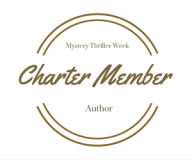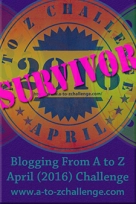
by Jazmin Ricks
How many times a day do you think about your drinking water? If you’re like me, drinking enough water each day is a constant struggle. I remember being chastised by my mom and, later, well-meaning friends who would criticize me for not drinking enough water. When life becomes busy and stressful it often feels like a chore to be constantly refilling your water bottle. While some of you can probably relate to this, how many of you have the problem of insufficient access to drinking water or your drinking water not being good enough?
Many millions of people around the globe have heard throughout their lives that their drinking water isn’t good enough and know the truth as a lived experience. Many individuals and families must plan their lives around ensuring that they and their loved ones have access to safe drinking water. Even locally in Philadelphia, residents can be exposed to severe debilitating drinking water contaminants like lead with limited options to fix the issue or move to a different home. Research has shown that the prevalence of lead in Philadelphia’s drinking water lines is fundamentally tied to the age of the city’s housing and infrastructure.

Lead is a naturally occurring heavy metal, inexpensive, malleable, and with valuable commercial, industrial and recreational uses. When lead is self-contained it poses minimal threat to humans. However, over time, lead can break down or erode. When lead is present in small enough particles, it is a potent neurotoxin that can delay development and stunt growing minds. Lead that has leeched into drinking water is a primary source of exposure for children. Over the last 50 years, the shift toward a lead-free drinking water system for vulnerable children in Philadelphia and across the U.S. has resulted in strict legislation regulating allowable amounts of lead exposure in our drinking water as well as protocols for compliance sampling, and in the event of lead detection, special sampling. The Philadelphia Water Department (PWD) has worked for decades to limit exposure to lead-contaminated drinking water to under the 15 parts per billion (ppb) action level. Due to that effort, there is virtually no detectable lead in the pipes that bring drinking water from fresh water sources to our neighborhoods.

A recent report by Pennsylvania’s Advisory Committee and Task Force on Lead Exposure concluded that while the sources of Pennsylvania’s drinking water are not generally lead-contaminated, the transportation network, i.e., water service lines that delivers water to residential homes does have the potential for contamination. Drinking water must pass through a series of piping, fixtures, and fittings, once the service line branches away from the utility system distribution pipe and reaches the household. If lead-scale precipitates away from the service line, it is possible for a resident to consume these lead particles. Lead Service Line (LSL) replacement is triggered when monitoring reveals that the water at the tap exceeds the lead action level of 15 ppb. The process for remediating a water distribution line that has verified lead content in excess of the reported guidelines can create an unexpected and expensive burden for a resident to fix. However, certain factors can reliably identify areas that are likely to have LSLs.

In a national survey, American Water Works Association estimated that 160,000 leaded service lines exist in Pennsylvania. It is difficult to determine an actual number and their exact locations, but it is likely that this is an underestimate due to the parameters of the survey. Vulnerabilities of this scale necessitate an in-depth analysis into effective ways to screen all children for lead exposure to prevent adverse health effects and how comorbidities (the presence of two or more diseases or medical conditions in a patient) related to lead exposure can be utilized to identify areas of high risk. To address this need, my project aimed to quantify the most effective ways to target areas with LSLs and reduce the lead concentration of drinking water to meet the goal of eliminating lead exposure in children. I created a hazard risk-categorization map of vulnerable areas, scaled from 1 (lowest risk) to 10 (highest risk), combining various environmental and health risk factors that have historically been indicative of wide-spread lead exposure.

This Leaded Service Line Vulnerability Index (LSL-VI) aims to provide a useful resource for residents as homebuyers or renters to stay adequately informed of the risk they may incur. “Environmental” risk vulnerabilities include physical and chemical exposure from lead due to housing build, location of property, and date of construction. “Health-risk” vulnerabilities include the various comorbidities and demographic-specific factors that, in combination, increase likelihood of exposure to adverse housing conditions and lead exposure. Sociodemographic factors associated with higher blood lead levels in children were non-Hispanic black race/ethnicity, low income, and household-type. For leaded service line exposures, data were obtained from a report created by Temple University that assessed lead risk based on strong indicators like pipe diameter and key buildings descriptors from 1900-1946. All Environmental and Health-risk factors were collected from publicly accessible census-data gathered from the online data mapping tool, PolicyMap.

The neighborhoods with the lowest levels of vulnerability to LSLs were located at the border of Philadelphia County whereas the neighborhoods with an increased vulnerability to LSLs clustered together in North Philadelphia. The neighborhoods of lowest risk aligned with higher median income, overall positive child opportunity outlooks, and lower risk of exposure to lead via LSLs in homes built prior to 1939 whereas the opposite was true of higher risk areas. All neighborhoods had some level of risk.
Although today, many laws have been implemented requiring these sources of environmental lead to be mitigated or made lead-free, lead’s presence is still very much here in our city as a legacy pollutant. My aim was to give residents the knowledge and control to create a better drinking water experience for themselves and their families.
Click here to see the full results of the index!

Jazmin Ricks graduated from Vanderbilt University’s BA program in Medicine, Health, and Society (MHS) in 2016 and from the University of Pennsylvania’s Master of Public Health (Environmental Health) program in 2021. Jazmin’s professional interests revolve around the field of Environmental Epidemiology and the effect that physical, biological, and chemical factors can have on the public’s health. As a Program Coordinator at The Water Center, Jazmin supports the aims of the Director of Programs and Applied Research and oversees the center’s applied research and programming efforts. Overall, Jazmin seeks to promote water equity and quality as well as advance environmental justice for all Pennsylvanians.











Hi Pam – I know your comments are moderated so I am giving you your laugh for the day and you can just delete this comment after you read the link. In an event to be more mindful of the environment, cows are being potty trained and evidently they catch on more quickly than kids. 🙂
https://www.audacy.com/wwjnewsradio/news/national/potty-training-cows-will-help-save-the-environment
LikeLiked by 1 person
ONG, that is hilarious!! Kind of like using goats to mow your lawn but better!! Thanks foe the laugh, Linda. ♥️
LikeLiked by 1 person
I figured I’d give you a smile Pam. They used to take goats to various parks around here where there were steep hills and areas where mowers could not get to – voila, instant grass cutters! How clever is this to clean up the environment? 🙂
LikeLiked by 1 person
clever indeed, Linda.
LikeLiked by 1 person
Hi Pam – it’s so great our eyes are being directed to articles like Jazmin’s. Lead has been used for centuries … in South Africa I had to get new water pipes in … the old ones were corroded lead … literally disintegrating. Politics plays a huge role – self-centred, so they don’t bring up the difficult challenges that actually need dealing with … such as this issue and others. Thanks – Hilary
LikeLiked by 1 person
I read somewhere that it was going to cost about 3 trillion dollars to fix our water infrastructure, Hilary. 😳
LikeLike
That’s the problem … we/you were the leaders with infrastructure and we’re now having to replace a great deal … so the costs will be huge – I agree.
LikeLiked by 1 person
Ginormous!
LikeLiked by 1 person
We live as tenants, and we know that everything in this house is out of date. So we can only hope that everything goes well!🤔 I drink about five litres of liquid a day!!😁😎 Great post as always, dear Pam.🤗🙏💖
LikeLiked by 1 person
Maybe a little water filter just in case, Aladin. 😳
LikeLiked by 1 person
We have it 😉🤗
LikeLiked by 1 person
It sure is scary Pam and thank you for bringing it to light in your post. As you know, Michigan had their water issues in Flint, so through that event I learned a lot about the dangers of old lead pipes. Here in Flat Rock, Michigan we have a crisis going on now where the huge Ford Motor Company Flat Rock Assembly Plant had gasoline go into the sewer lines. People smelled a sweet gas smell last week. By Friday they evacuated 11 homes; now 1,100 homes were suggested to evacuate, but it was not mandatory. The Governor declared a state of emergency due to the chemical benzene which is toxic. Although there was no harm to the drinking water, it was considered harmful to have the fumes in your home. Ford Motor Company didn’t “‘fess up” right away either. Very scary.
https://www.wxyz.com/news/ford-says-they-are-likely-source-of-odor-that-triggered-flat-rock-state-of-emergency
LikeLiked by 1 person
It is a scary mess, Linda. 😞
LikeLiked by 1 person
It is Pam. Today they brought one of only two EPA trucks in the U.S. to the neighborhood to examine every single home’s basement to detect any benzene. Truck looked to be a City block long from the photos.
LikeLiked by 1 person
Wow, I’ve never seen that, Linda.
LikeLiked by 1 person
Pam – I heard on the news they only bring those particular vehicles out for major spills, usually after a natural disaster. They have determined the benzene did not get into the drinking water and supposedly are not flushing the sewer lines to any lakes or rivers. It is believed that a class action lawsuit may be filed vs Ford Motor Company by the homeowners. Congresswoman Dingell is asking that all Ford Motor Company plants be thoroughly checked out, as FoMoCo was not forthcoming about the spill right away.
LikeLiked by 1 person
A violation of their NPDES permit for sure, Linda.
LikeLiked by 1 person
This is such an important topic, Pam, and a bit of synchronicity. I just finished reviewing a student paper about the dangers posed by old lead pipes. I would guess you have read one of the sources the student drew from about testing for lead in k-12 schools. Here’s a link in case you or Jazmin are interested in reading the GAO Report – “Lead Testing of School Drinking Water Would Benefit from Improved Federal Guidance” – https://www.gao.gov/products/gao-18-382.
LikeLiked by 1 person
Thanks, Carol! Actually, the EPA is currently working on revisions to the Lead and Copper Rule which should also help.
LikeLiked by 1 person
Very interesting Pam. Thank you for the information on this 🙂
LikeLiked by 1 person
♥️❤️🙏 thanks for reading, Michele.
LikeLike
Pam, thanks for raising our awareness on this issue. Yet another threat to our health and well-being!
LikeLiked by 2 people
Am I becoming the harbinger of doom, Ros?! Maybe a light-hearted post next. 😂
LikeLiked by 2 people